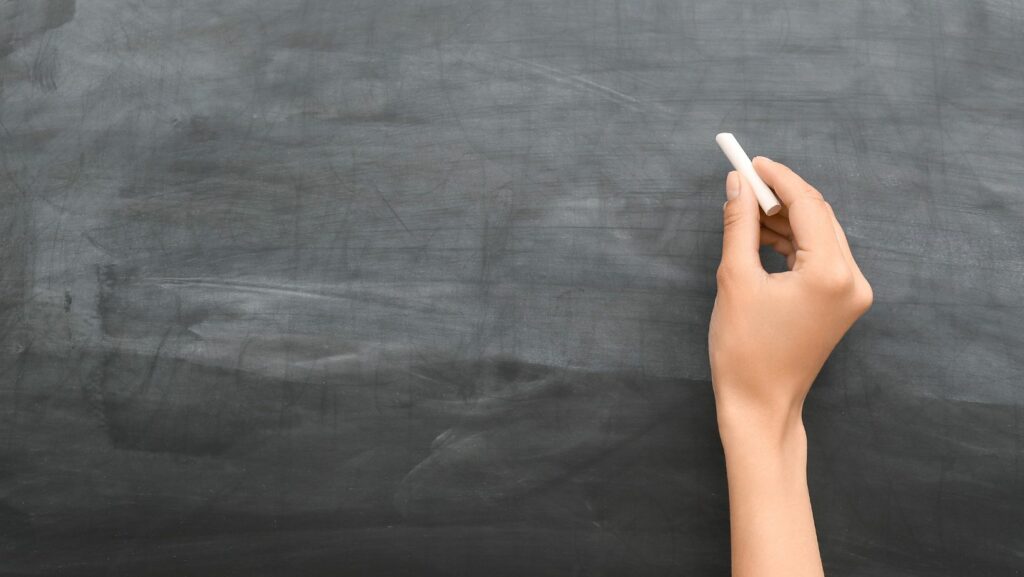Chalk writing isn’t just a skill reserved for classroom teachers; it’s an art form that can transform any chalkboard into a captivating display of information or creativity. Whether it’s for a cafe’s menu, a special event sign, or simply to bring a touch of nostalgia to a space, mastering chalk writing can make all the difference. With the right techniques, anyone can turn a dusty old chalkboard into a work of art.
Chalk Writing Tips
Cultivating the art of chalk writing enhances chalkboard displays, transforming them into captivating masterpieces. Mastering this skill involves not only creativity but also the knowledge of selecting proper tools and preparing the surface correctly. The following tips aim to guide both novices and experienced artists, ensuring their chalkboard creations stand out.
Choosing the Right Chalk
 Selecting the appropriate chalk plays a pivotal role in chalk writing. The market offers two primary types: traditional and chalk markers. Traditional chalk, made from calcium sulfate or calcium carbonate, provides a classic look and is ideal for those seeking an authentic, rustic appearance. Its powdery texture allows for easy blending, making it suitable for artistic effects. On the other hand, chalk markers offer a vibrant and smooth application. They are perfect for creating sharp, bold lines that stand out. Chalk markers work best on non-porous surfaces and are easier to clean, providing a durable finish.
Selecting the appropriate chalk plays a pivotal role in chalk writing. The market offers two primary types: traditional and chalk markers. Traditional chalk, made from calcium sulfate or calcium carbonate, provides a classic look and is ideal for those seeking an authentic, rustic appearance. Its powdery texture allows for easy blending, making it suitable for artistic effects. On the other hand, chalk markers offer a vibrant and smooth application. They are perfect for creating sharp, bold lines that stand out. Chalk markers work best on non-porous surfaces and are easier to clean, providing a durable finish.
Key factors in choosing chalk include:
- Surface compatibility: Ensure the chalk type is suitable for the chalkboard material.
- Color variety: Opt for chalks that offer a wide range of colors for dynamic and visually appealing creations.
- Erasability: Consider how easily the chalk can be removed, especially for temporary designs or messages.
Preparing Your Chalkboard
Proper preparation of the chalkboard is crucial for optimal chalk writing. Cleaning the surface ensures a smooth canvas, free of dirt and grease that can affect chalk application. For best results, one should use a damp cloth followed by a dry one to eliminate any moisture that could smear the chalk. Seasoning the chalkboard is another essential step, especially for new boards. To season, simply cover the entire surface with the side of a piece of chalk, then erase. This process creates a layer that prevents ghosting – the term used to describe faint traces left behind after erasing.
Effective preparation includes:
- Thorough cleaning: Wipe the chalkboard with a damp cloth, then dry it completely.
- Seasoning the board: Rub the entire surface with the side of a chalk, then erase for a ready-to-use surface.
- Checking for smoothness: Ensure the board is smooth and free of scratches, as imperfections can hinder chalk writing.
Creating Your First Chalk Masterpiece
Sketching Your Design
 Sketching your design plays a crucial role in the creation of a chalk masterpiece. It serves as a blueprint for your final artwork, allowing for adjustments and ensuring that the composition is well-balanced. Begin by lightly drawing guidelines and the basic outlines of your text and images with a piece of chalk. This preliminary step ensures that every element fits perfectly on the board, maintaining proportional spacing and alignment. For complex compositions, consider using a chalk pencil for finer details, offering more control than standard chalk sticks. Erasing and adjusting the sketch as needed before applying the final layers of chalk helps in achieving a polished look. This step not only streamlines the creative process but also significantly reduces the risk of errors during the final execution.
Sketching your design plays a crucial role in the creation of a chalk masterpiece. It serves as a blueprint for your final artwork, allowing for adjustments and ensuring that the composition is well-balanced. Begin by lightly drawing guidelines and the basic outlines of your text and images with a piece of chalk. This preliminary step ensures that every element fits perfectly on the board, maintaining proportional spacing and alignment. For complex compositions, consider using a chalk pencil for finer details, offering more control than standard chalk sticks. Erasing and adjusting the sketch as needed before applying the final layers of chalk helps in achieving a polished look. This step not only streamlines the creative process but also significantly reduces the risk of errors during the final execution.
Bold Lines and Shading Techniques
Achieving depth and dimension in chalk art involves mastering bold lines and shading techniques. Bold lines draw attention and add clarity to your writing and images, making them stand out on the chalkboard. Pressing the chalk firmly against the board creates thicker, more prominent lines. For added emphasis on certain words or areas, layering multiple strokes enhances their boldness and visibility.
Shading, on the other hand, introduces gradients and texture, bringing your artwork to life. Lightly dragging the side of a chalk piece creates a soft, shaded effect, perfect for backgrounds or filling larger areas. Different shading intensities can be achieved by varying the pressure applied to the chalk.
